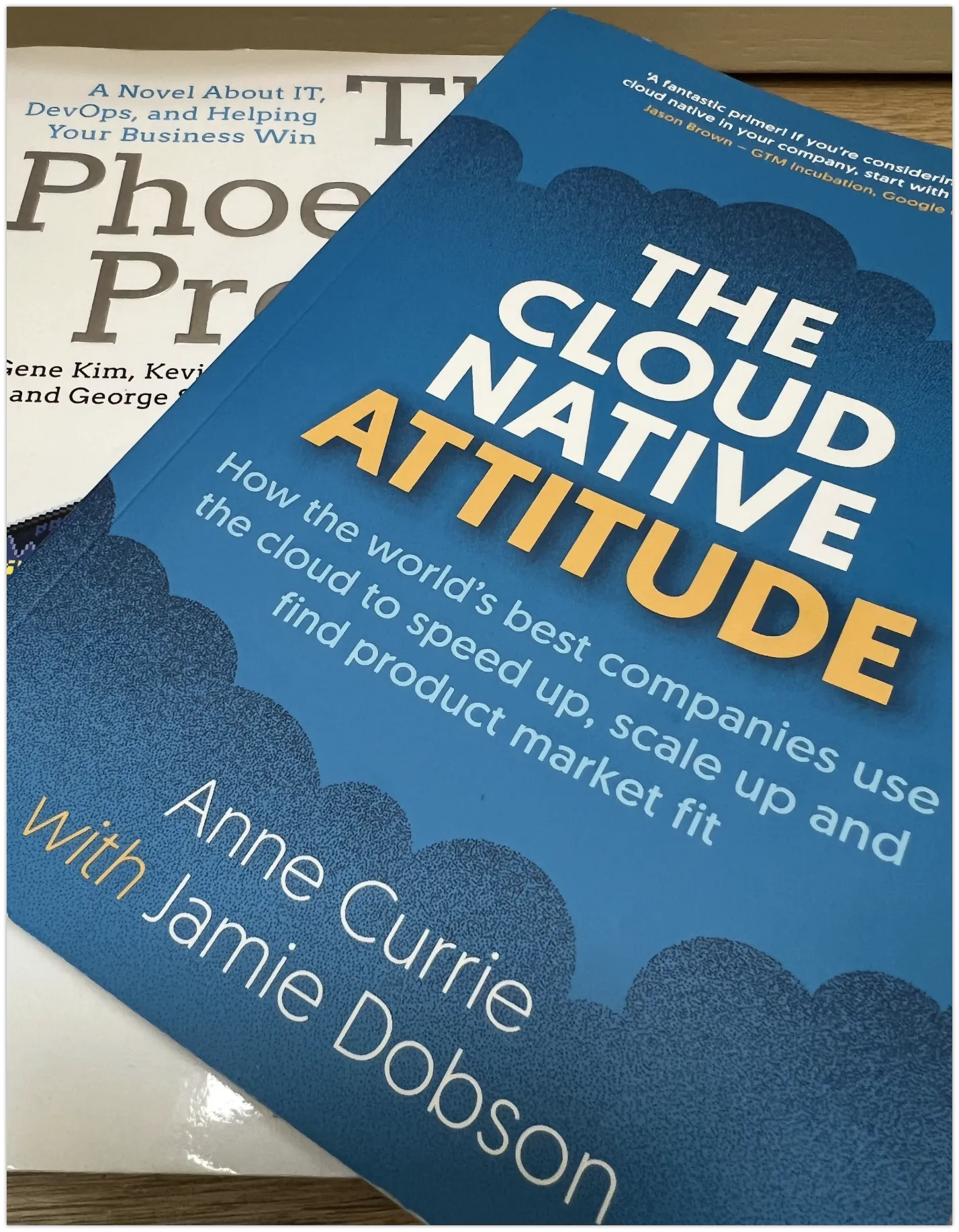Season 1 Episode 3 - Cloud Native
Links to the Episode:
Episode published - 25th June 2025
What is Cloud Native?
About Jamie Dobson!
- Started programming when they were 9
- Graduating Computer Science in the early 2000s
- By trade a Professional Software Engineer
More importantly is the co-founder of Container Solutions, a professional services consultancy company specialising in cloud migration.
You may also know our guest as an author.
- Co-author of Cloud Native Transformation - Published by Oreilly - in which the book covers topics such as:
- HOW - Going cloud native has been a big advantage for many companies.
- BUT ALSO - How tough it is to get it right, especially for enterprises with critical legacy systems

- They are also the co-author of The Cloud Native Attitude:
- a book that discusses a Cultural Mindset Over Tools: becoming cloud native is more about how you think and work rather than what tools you use.
- A book that breaks down common jargon, helping readers separate meaningful strategies from hype.
A new book called - Visionaries Rebels and Machines - the story on humanity’s extraordinary journey from electrification to cloudification was recently released on 19th June. 
Order your copy here! Amazon
Definition of Cloud - CNCF
CNCF - Cloud computing is a model for enabling ubiquitous, convenient, on-demand network access to a shared pool of configurable computing resources (e.g., networks, servers, storage, applications, and services) that can be rapidly provisioned and released with minimal management effort or service provider interaction.
Cloud for Broadcasters?
The broadcast industry is certainly transitioning, and while the rates of change will understandably vary considerably across different markets — and even between broadcasters within them — broadcasters certainly need to be thinking of the cloud in the medium to long-term
The hybrid solution becomes important. Rather than jumping in feet first and going all-in on the cloud, this approach allows businesses in the broadcast sector to slowly lower themselves into the water by deploying cloud technologies on-site. Hybrid cloud workflows are becoming the norm, with 50% of broadcasters combining SDI, IP, and cloud technologies, though reliance on on-premise solutions remains strong.
Cloud is not always the answer …
Cloud is not always the answer - 2022 article - Basecamp has had one foot in the cloud for well over a decade, and HEY has been running there exclusively since it was launched two years ago. We’ve run extensively in both Amazon’s cloud and Google’s cloud. We’ve run on bare virtual machines, we’ve run on Kubernetes. We’ve seen all the cloud has to offer, and tried most of it. It’s finally time to conclude: Renting computers is (mostly) a bad deal for medium-sized companies like ours with stable growth. The savings promised in reduced complexity never materialized. So we’re making our plans to leave.
The cloud excels at two ends of the spectrum, where only one end was ever relevant for us. The first end is when your application is so simple and low traffic that you really do save on complexity by starting with fully managed services. This is the shining path that Heroku forged, and the one that has since been paved by Render and others. It remains a fabulous way to get started when you have no customers, and it’ll carry you quite far even once you start having some. (Then you’ll later be faced with a Good Problem once the bills grow into the stratosphere as usage picks up, but that’s a reasonable trade-off.)
The second is when your load is highly irregular. When you have wild swings or towering peaks in usage. When the baseline is a sliver of your largest needs. Or when you have no idea whether you need ten servers or a hundred. There’s nothing like the cloud when that happens, like we learned when launching HEY, and suddenly 300,000 users signed up to try our service in three weeks instead of our forecast of 30,000 in six months. But neither of those two conditions apply to us today.
Reference Articles
- Flocking to the cloud - EBU tech-i 045 - 2020!
- How COVID-19 accelerated cloud-based production
- Shifting to OPEX through serverless and microservices
- Haivision’s latest Broadcast Transformation Report 2025
- The 2025 Broadcast Transformation Report reveals that while cloud adoption is widespread, its integration into workflows remains limited. 86% of broadcasters use some form of cloud-based technology, but 49% rely on it for less than a quarter of their workflows. Only 2% of respondents are entirely cloud based.
- Ed Newton Rex FOI Request - https://www.linkedin.com/feed/update/urn:li:activity:7335332774494486532/
- THOMAS EDISON AND MENLO PARK https://www.menloparkmuseum.org/history/
- Tommy Flowers - https://en.wikipedia.org/wiki/Tommy_Flowers
- ENIAC - https://www.britannica.com/technology/ENIAC
- RADAR - History of Radar - https://en.wikipedia.org/wiki/History_of_radar